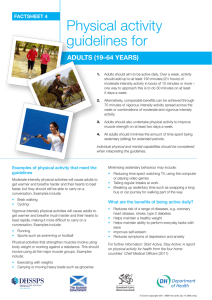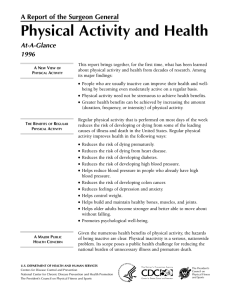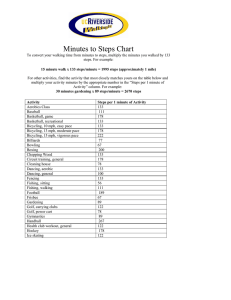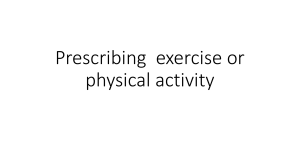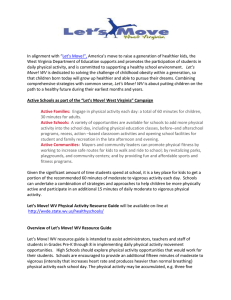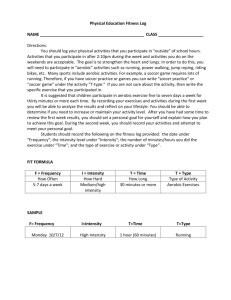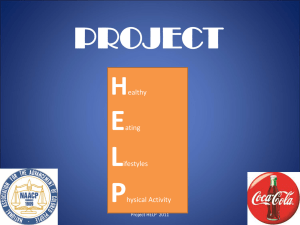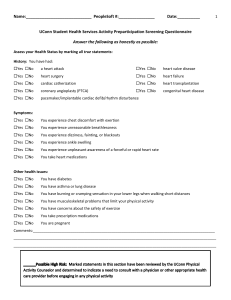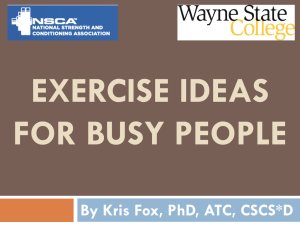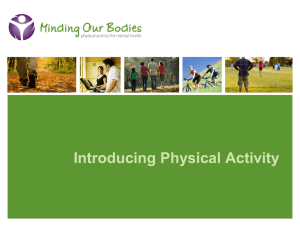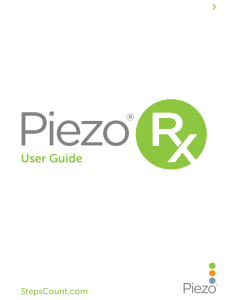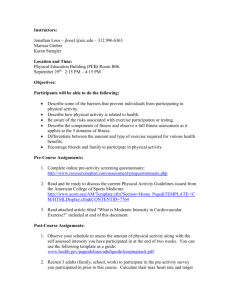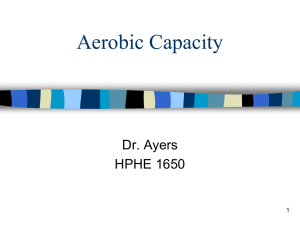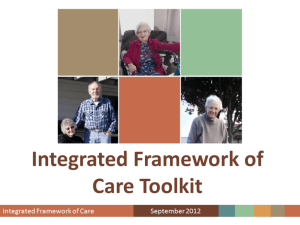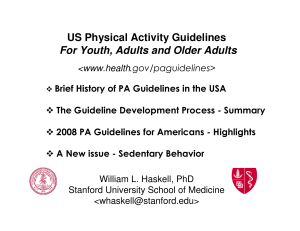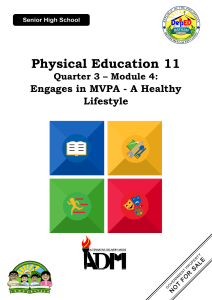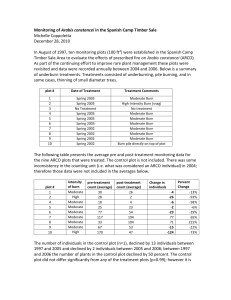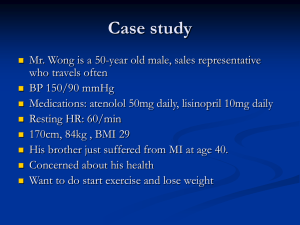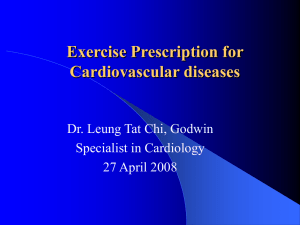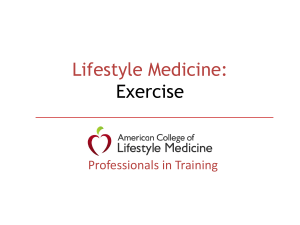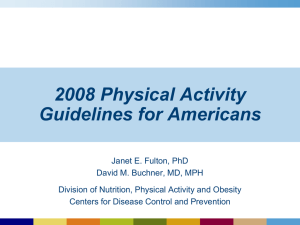Health and Human Services Guidelines for Physical Activity health
advertisement
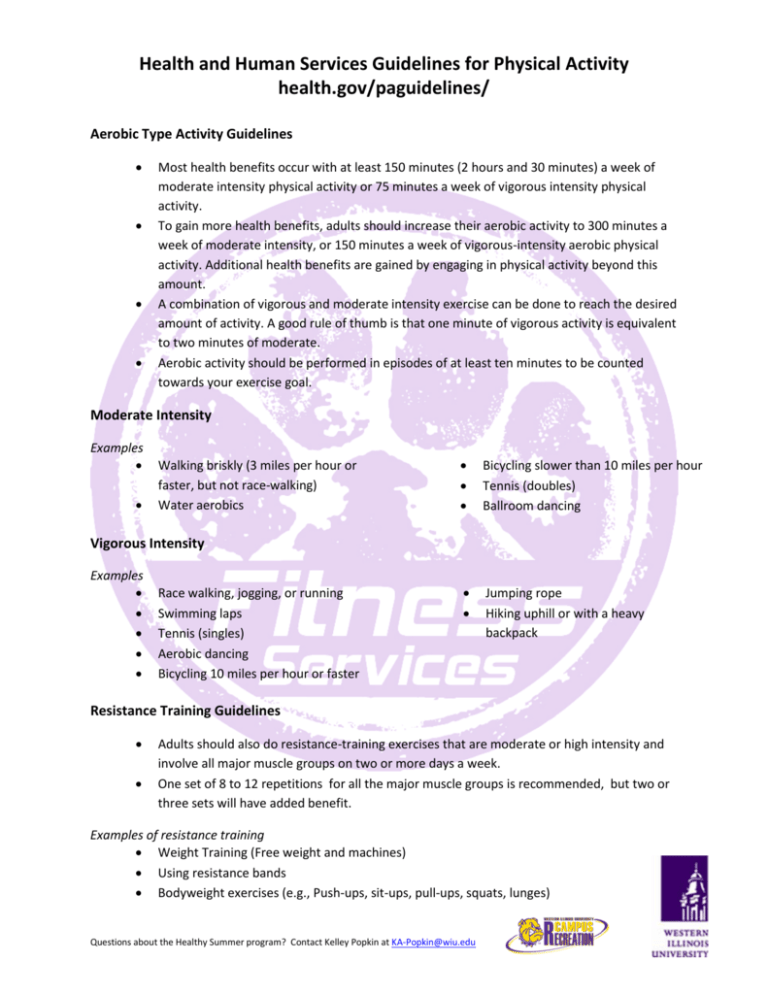
Health and Human Services Guidelines for Physical Activity health.gov/paguidelines/ Aerobic Type Activity Guidelines • Most health benefits occur with at least 150 minutes (2 hours and 30 minutes) a week of moderate intensity physical activity or 75 minutes a week of vigorous intensity physical activity. • To gain more health benefits, adults should increase their aerobic activity to 300 minutes a week of moderate intensity, or 150 minutes a week of vigorous-intensity aerobic physical activity. Additional health benefits are gained by engaging in physical activity beyond this amount. • A combination of vigorous and moderate intensity exercise can be done to reach the desired amount of activity. A good rule of thumb is that one minute of vigorous activity is equivalent to two minutes of moderate. • Aerobic activity should be performed in episodes of at least ten minutes to be counted towards your exercise goal. Moderate Intensity Examples • Walking briskly (3 miles per hour or faster, but not race-walking) • Water aerobics • Bicycling slower than 10 miles per hour • Tennis (doubles) • Ballroom dancing Vigorous Intensity Examples • • • • • Race walking, jogging, or running Swimming laps Tennis (singles) Aerobic dancing Bicycling 10 miles per hour or faster • Jumping rope • Hiking uphill or with a heavy backpack Resistance Training Guidelines • Adults should also do resistance-training exercises that are moderate or high intensity and involve all major muscle groups on two or more days a week. • One set of 8 to 12 repetitions for all the major muscle groups is recommended, but two or three sets will have added benefit. Examples of resistance training • Weight Training (Free weight and machines) • Using resistance bands • Bodyweight exercises (e.g., Push-ups, sit-ups, pull-ups, squats, lunges) Questions about the Healthy Summer program? Contact Kelley Popkin at KA-Popkin@wiu.edu
